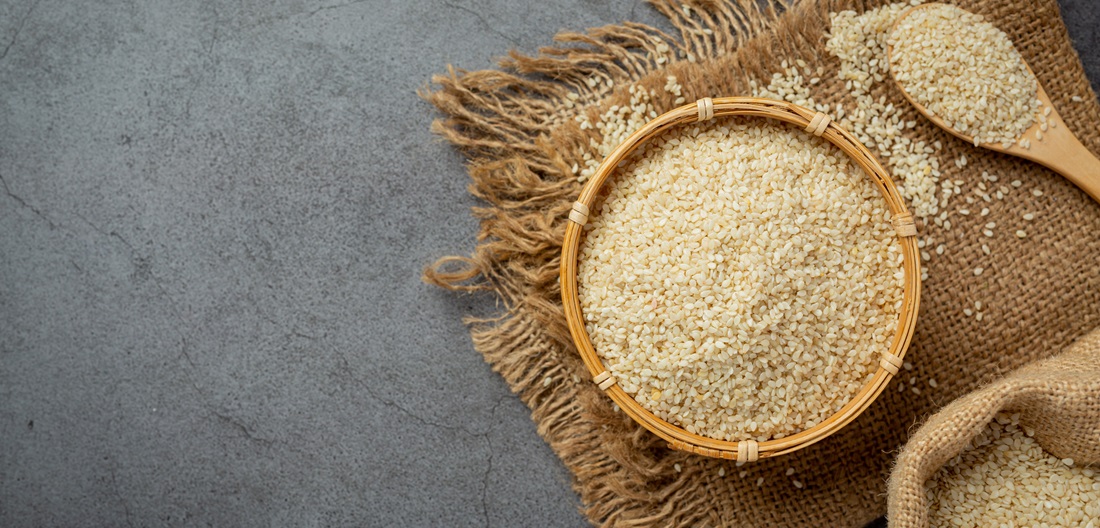
Brazil’s Sesame Cultivation Soars, Eyes Export Growth with Focus on China Market
Nov, 12, 2024 Posted by Sylvia SchandertWeek 202443
Sesame cultivation has been expanding rapidly in Brazil, with the planted area increasing by 83% from 2022 to 2023, reaching 660,000 hectares, according to a report from Itaú BBA.
Furthermore, sesame production has risen by 107%, from 174,000 tons in the 2022/23 harvest to 361,000 tons in the 2023/24 season. For comparison, production was only 41,000 tons in the 2018/19 harvest.
The expansion is mainly driven by sesame’s high profitability and low production cost compared to traditional crops like second-crop corn, particularly in regions where the ideal planting window for corn is missed.
Sesame presents itself as a more resilient and cost-effective option with lower input demands and more excellent resistance to drought, making it attractive to farmers, especially during uncertain weather conditions, according to Itaú BBA. However, the crop is not tolerant of cold climates or high altitudes.
Sesame productivity, however, remains limited by technical challenges, such as the lack of specific mechanization and the problem of dehiscence, which leads to seed loss during harvest.
The average sesame yield in Brazil is still considered low, around 510 kilograms per hectare, far below that of the main exporting countries. According to the report, investments in genetic seed improvement are crucial to meeting more demanding markets and improving productivity.
Mato Grosso leads production in Brazil, accounting for 64% of the planted area, followed by Pará and Tocantins with 22% and 13%, respectively.
Global Landscape
Globally, sesame is cultivated in 70 countries, primarily in Asia and Africa. The central countries in terms of planted area are Sudan, India, Myanmar, and Tanzania, which account for approximately 64% of the global cultivated area, covering 12.8 million hectares, according to 2022 data from the Food and Agriculture Organization (FAO).
Sesame seeds, with an oil content of about 50%, have multiple applications in the food and cosmetics industries, creating a demand beyond raw seeds’ consumption.
The sweet variety, more accepted in the international market for human consumption, still needs to be widely cultivated due to more significant losses in mechanized harvesting and lower productivity. It is used, for example, in the production of tahini, bakery products, and other dishes from the Middle East, Asia, and Africa.
Export Market
Brazil’s sesame exports reached 151,000 tons in 2023, representing about 42% of the country’s total production.
India is the main destination, absorbing 38% of the exported volume, followed by Turkey and Guatemala.
However, the report notes that the potential opening of the Chinese market to Brazilian sesame could present a significant opportunity, as China is the world’s largest importer of sesame, with 1.1 million tons imported in 2022.
“Despite the growth, the sesame industry in Brazil faces important challenges, such as low productivity due to insufficient scientific knowledge, scarce technologies, lack of specific mechanization, and seed dehiscence, a natural process of capsule opening and seed release, which can lead to significant losses during harvest,” the report states.
The report also notes that few buyer companies operate in this segment in Brazil, making it “essential to select partners to minimize risks associated with counterparts carefully. Poor partner selection may result in payment issues or product rejection, negatively impacting producers’ profitability. ”
Source: Globo Rural
Click here to read the original article: https://globorural.globo.com/agricultura/noticia/2024/11/cultura-do-gergelim-cresce-no-brasil-e-aposta-em-mercado-externo.ghtml
-
Economy
Oct, 15, 2024
0
Significant Growth in Argentina-Brazil Trade in September
-
Trade Regulations
Feb, 28, 2021
0
Arab league is second-ranked destination for Brazilian food exports
-
Other Logistics
Nov, 14, 2023
0
Rumo sees record volume, profits in 3Q23
-
Meat
Oct, 25, 2022
0
Argentina apt to export pork to Lebanon

